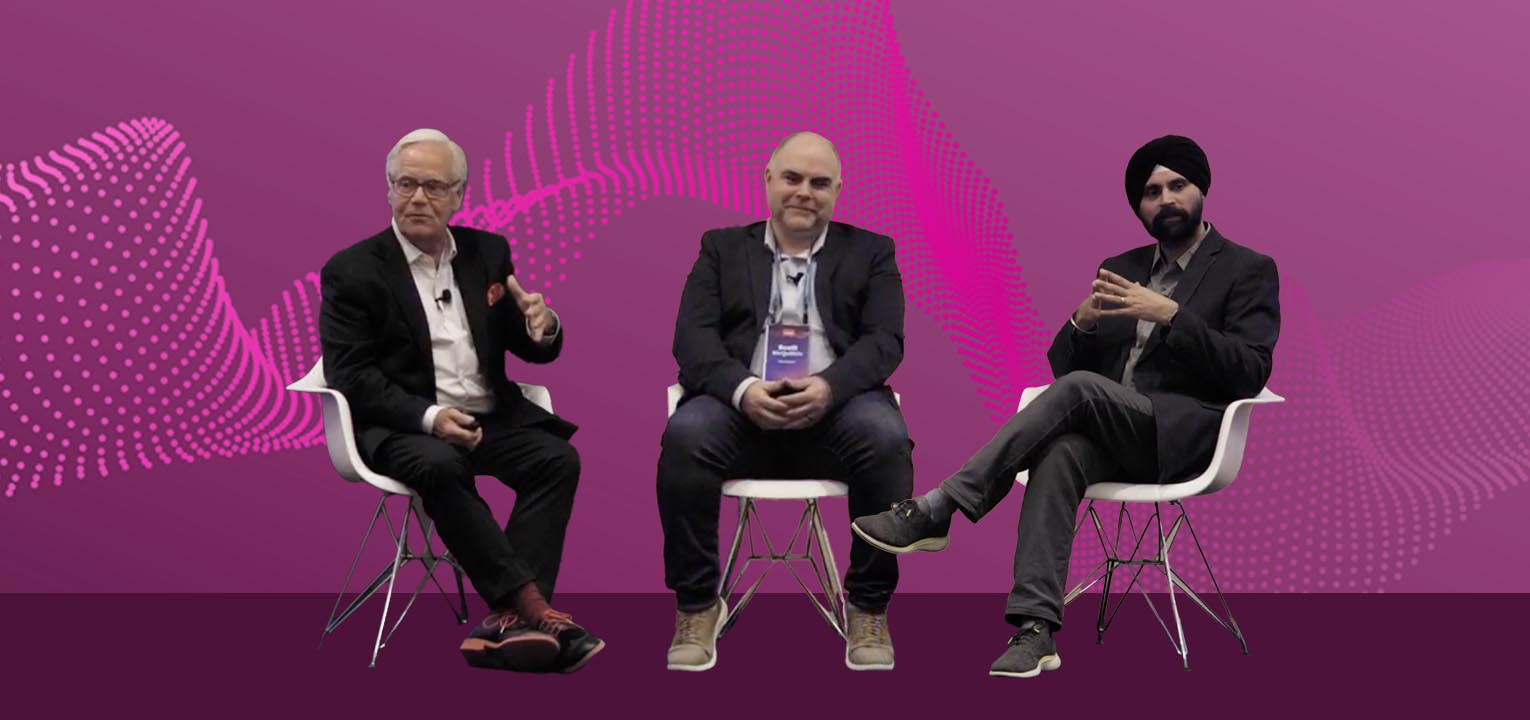July 21, 2022
Can We Trust Banking’s New Wave of Carbon Tracking Features?

By Will McCurdy on Thursday 21 July 2022
We’re likely to see more carbon tracking features from banks and fintech’s soon, but are their estimates reliable, and should consumers get their hands held when it comes to sustainability?
Banks and fintechs are currently fighting it out to introduce features which appeal to Generation Z, as well as satisfy ever more stringent levels of ESG oversight. The introduction of carbon tracking features comfortably ticks all the above boxes.
Established players such as Mastercard and Natwest have all recently launched features which allow consumers to quantify their carbon footprints, who are joined by a plethora of well-funded start-ups such as Cogo and Sweden’s Doconomy.
However, as the true environmental impact of purchases may be hard to quantify, and trust in financial institutions can be low, will the current trend of adding carbon tracking features to banking apps continue?
AltFi talked to several experts in the space to ascertain whether we’ll see the rise of carbon tracking features continue, whether these features can be trusted, and how these tools are set to evolve over the next few years.
What’s driving implementation?
Hamza Behzad, Icelandic banking software firm Meniga’s head of product strategy, believes the drive for better public perception will push more financial institutions to implement carbon tracking features.
“There’s a PR lens to this whole thing, banks feel they need to show that they are fighting the good fight against climate change,” he said.
But they’re not just doing it for PR according to Behzad, there are plenty of other reasons mixed in as well, including scope for financial institutions to monetize features like carbon tracking.
“It’s seen as a bit of a dirty thing in the industry – monetising carbon tracking doesn’t sound quite right,” said Behzad. “But then again, there are many reasons why they might want to”.
“A bank might be able to profit off solutions like this because then they can reinvest the technology and data they develop into similar areas in the future, and then that whole cycle of innovation can continue”.
Stephen King, who leads sustainability solutions for Europe at Visa, reiterated the potential commercial viability of introducing these features, stating that though consumers want these apps “they don’t know who they’re going to get them from yet, whether it’s going to be companies individually providing them or the big manufacturers – or are they going to come from the government?”
King believes that carbon tracking features are a “value add” proposition that “not many people” are currently operating and which is “clearly an opportunity”.
Manuel Antunes, an investor at venture capital firm Triple Point Ventures, believes that if carbon tracking features prove to be a function which consumers feel adds value, they could eventually become ubiquitous.
“It initially started off with just a select few challenger banks offering spending categorisation many years ago,” said Atunes. “And then suddenly, you could go into Barclays or NatWest, or whatever is the most conservative bank that you could find, and they have already put in place some form of spending categorization”.
Atunes expects to see a similar progression in terms of banks adding carbon tracking features “with all banks following” if their implementation gathers some initial momentum.
King from Visa harkened back to 20 years ago when labels showing calories started to come into place in the food industry, reminding all the younger people in finance of “all the work that needed to be done to get the calorie count accurate enough to actually put it on the back of a label – an enormous amount of heavy lifting needed to happen”.
It could ultimately be the desire for Generation Z spending power that pushes more banks to add these features.
Research from Tink has found that among the 18–34-year-olds it surveyed, nearly two-thirds (62 per cent) want more information about their carbon footprint so they can reduce their impact on the planet.
Tink’s research also found that over half – 53 per cent – want to use a service which actively suggests ways to change their spending to cut their carbon footprint.
Are these insights reliable?
The carbon footprint of any purchase involves a plethora of different factors, depending on where the product was made, where it was shipped from, and the outlet which sold it, which obviously impacts the reliability and levels of trust that can be placed in carbon tracking features.
“Five pounds worth of groceries is not the same in the UK as five pounds in India,” pointed out Behzad from Meninga. “It simply doesn’t match up because of the obvious supply chain differences.”
Sparing no restraint, chief people officer at UK personality-focused fintech Quirk, Nafeesa Jafferjee, described claims around accurate carbon tracking features as “mostly bs” and that a lot of product’s claims only work on a “superficial basis”.
“We considered implementing carbon tracking features into our own product line, but found it was too difficult to do in a way which was accurate and authentic,” said Jafferjee.
Emma Kisby, chief executive UK and EU for Cogo acknowledged that carbon “historically has been difficult to measure and quantify, but as the world prioritises sustainability, solutions are forming”.
Kisby believes that factors such as “Carbon labelling, consumers looking for transparency, and increasing pressures from governments will all enable better carbon tracking for purchases”.
Antunes from Triple Point Ventures believes that current carbon tracking features already provide a degree of value in their current state but have some serious deficiencies.
“These carbon trackers provide massive estimations on a sector level, which means if you go to a supermarket, it doesn’t matter what supermarket, it will take into consideration your carbon footprint based on revenues of the category which the supermarket falls into, which is somewhat helpful in the sense that the consumer buying from a sector has somewhat of an awareness of whether it is more or less harmful.”
However, Antunes believes there is a huge amount of scope for improvement in terms of the insights on offer if the data quality can be improved.
“We’ll very soon see players disrupting the space and providing merchant level information. We’ve in-vested in a company called Connect Earth, which is building a database of companies which allocate carbon footprints on a per company basis.”
He added: “This means when you go to Tesco, you’ll be shown a carbon footprint that is different than the carbon footprint shown if you’d go to Sainsbury’s.”
Dorel Blitz from Israeli software firm Personetics thinks one of the reasons these carbon estimates have limited utility is that “they’re not really getting complete access to the customer’s financial behaviour”.
“They’re mostly just looking that the payments data,” he went on. “What about the checking accounts data? Maybe I have two bank accounts. There is no holistic analysis of customers financial behaviour, so you’re not able to calculate the carbon footprint.
“Some apps can’t even tell if you are vegan, which alone makes a huge difference to your overall carbon footprint,” he added.
Behzad from Meniga believes ultimately that perfect could end up being the enemy of good when it comes to carbon tracking.
“There is an issue where banks first need to make sure that they’re utilizing the right datasets, then also utilizing the right suppliers,” said Behzad. “But our goal has never been to be 100% accurate”.
“Even if you can be 80 per cent accurate, and there’s a 20 per cent margin of error, the thing is you’re getting the customers more and more and more aware of how their behaviour impacts the world around them”.
“Proportionality, putting things into context, putting things into perspective, I think that’s more important than getting a 100%, accurate and precise number,” he added.
How should banks approach making recommendations?
Some commentators believe the devil really is in the detail when it comes to carbon tracking features, and firms need to go beyond simply telling you how much carbon you’ve used. And being totally honest, even the most sustainability inclined laypeople would struggle to tell you exactly how much a tonne of CO2 looks like.
Atunes believes that presenting actionable insights will be key for carbon tracking features: “if a bank is only presenting you your carbon emissions to you without any actionable, I don’t know if it will be very value additive, apart from just being a function that people will have to have, if indeed the trend goes towards this direction.”
Blitz from Personetics believes banks should go a step further and practically act as a “sustainability coach” to customers.
“Businesses should give customers something that they can actually understand – not just kilograms of CO2, but also recommendations about what they should do,” he said.
Blitz believes businesses should advise customers about whether they should spend less or if there are different types of purchases, they could make that could reduce their carbon footprint.
“If the customer is increasing the usage of his car, and the fuel price is getting high, maybe this carbon conscious consumer should save for an electric car,” said Blitz. “Maybe the bank has a specific loan for electric cars available.”
“I’m based in Tel Aviv, we have a lot of sun, and a solar panel could be a viable way for some carbon conscious consumers in our area to cut their footprint,” he added.
King from Visa however believes banks need to carefully tread the line “between education and raising awareness”.
“We’re not in primary school, telling people to sit down, I believe that customer choice is critically important,” he added.
With sustainability undeniably being a key purchasing driver for Generation Z and millennials it’s unlikely that carbon tracking features are going to disappear anytime soon, as banks and fintechs fight for their purchasing dollar.
However, the current crop of carbon tracking features may be comparatively primitive in both the data they use and the information they provide customers, and the world of carbon trackers may look extremely different when and if these features become ubiquitous.
Originally published on Alt Fi, 21 July 2022: https://www.altfi.com/article/9574_can-we-trust-bankings-new-wave-of-carbon-tracking-features
Want to explore how your bank can harness the power of AI to engage and serve customers? Request a demo now
Latest Posts

The AI Implementation Reality Check

Why Asia Pacific Pacific Banks Must Lean into Cognitive Banking: A Conversation with Dr. Dennis Khoo

Explore our Spring Release Highlights – From Integrated Marketing Offers, to Custom Trackers, and AI Innovation









